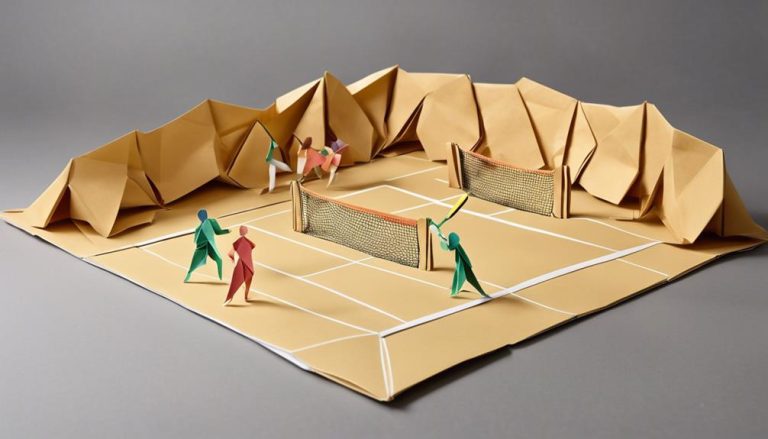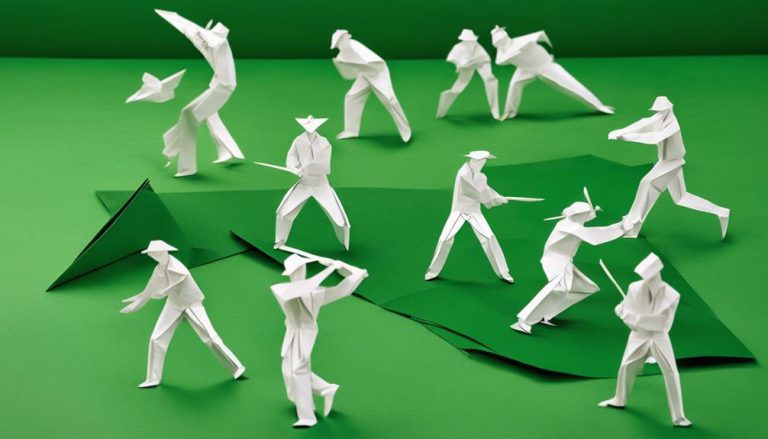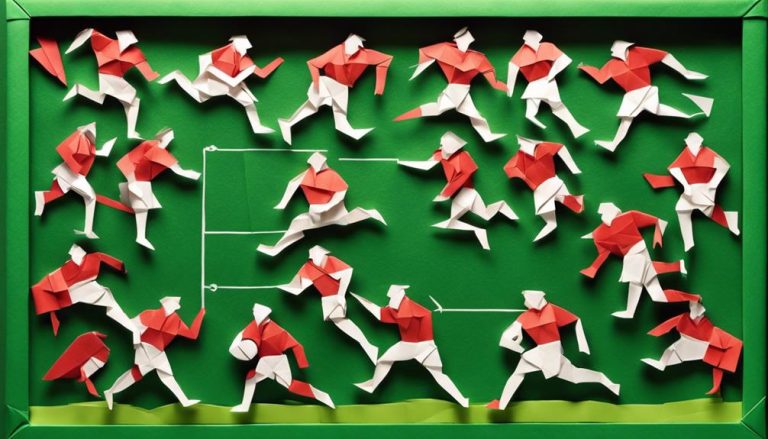General Rules of Field Hockey
You're about to step onto the field, and understanding the general rules of field hockey is essential. A match consists of two 35-minute halves, with a 10-minute halftime break. You'll score points by hitting the ball into the opponent's goal, earning one point per goal. The field is 100 yards long and 60 yards wide, with goals at each end. As you play, remember to manage your time effectively, respect your opponents, and stay focused. As you learn more about the game's intricacies, you'll uncover the strategies and techniques that will take your gameplay to the next level – and that's just the beginning.
Game Duration and Timing
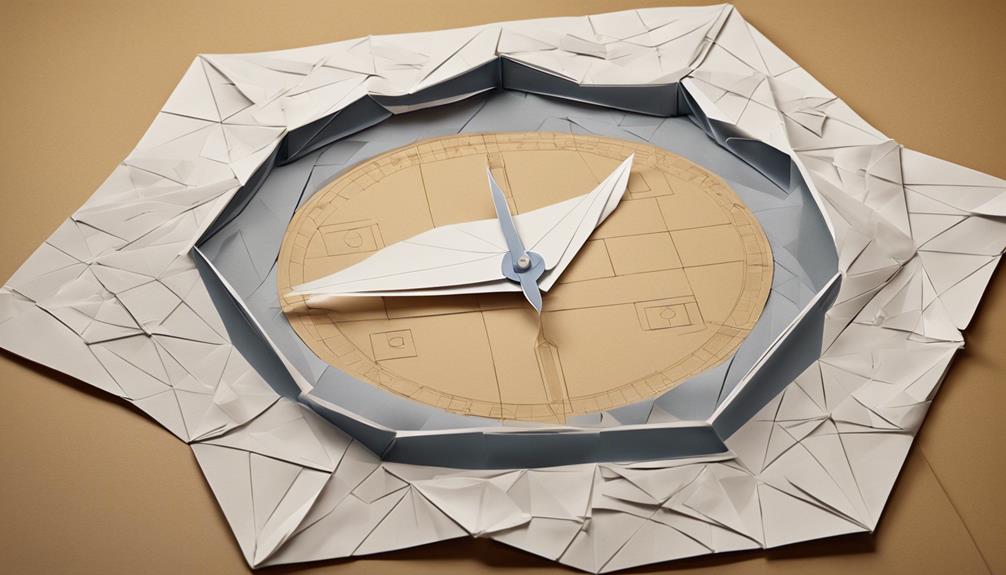
You'll play each field hockey match, consisting of two halves, each lasting 35 minutes in international competitions and 30 minutes in domestic games. During these matches, you'll need to understand the timing rules to maximize your team's performance. One vital aspect is Time Outs, which allow your team to regroup and adjust strategy. In a match, each team is entitled to one 2-minute Time Out per half, taken concurrently with a regular stoppage of play. This brief break can be a game-changer, giving you a chance to reassess and refocus.
Halftime Strategy is also critical, as it sets the tone for the second half. This 10-minute break is an opportunity to rehydrate, reassess, and adjust your strategy. Use this time to discuss team performance, opponent weaknesses, and areas for improvement. A well-planned halftime strategy can mean the difference between victory and defeat. Remember, every minute counts, and effective time management is key to success in field hockey.
Scoring Goals and Points
As you've optimized your time management, it's time to focus on the most thrilling aspect of field hockey: scoring goals and earning those vital points that can make all the difference in a match. In field hockey, a goal is scored when the ball crosses the goal line between the goal posts and under the crossbar. You earn one point for each goal scored. The team with the most points at the end of the game wins.
The point system is simple: one goal equals one point. The team with the most points at the end of the game takes the victory. But, it's not just about scoring; it's about celebrating those goals in style. Goal celebrations are a key part of the game, and you're encouraged to express your joy and excitement when you score. However, remember to keep your celebrations respectful and within the rules. Avoid excessive celebrations that may delay the game or disrupt the opponent's concentration. With a clear understanding of the point system and goal celebrations, you're ready to take your game to the next level.
Field Dimensions and Markings
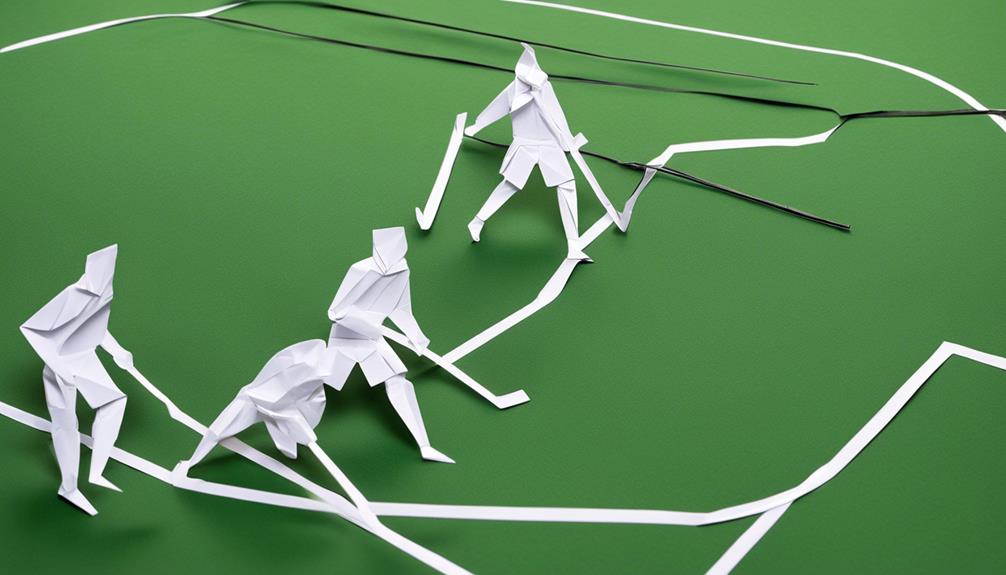
As you step onto the field, you'll notice the carefully defined boundaries and markings that govern the game. The field's size and goal dimensions are strictly regulated, ensuring a fair and consistent playing experience. You'll need to familiarize yourself with the pitch boundaries, markings, and circles to navigate the game effectively.
Field Size and Goals
A standard field hockey field measures 100 yards (90 meters) in length and 60 yards (55 meters) in width, with goals positioned at each end. As you step onto the field, you'll notice the rectangular shape, with a goal at each end, 7.32 meters (24 feet) wide and 2.44 meters (8 feet) high. The goalposts, 3.66 meters (12 feet) apart, are vital for goalkeeper strategies, as they provide a narrow window for opponents to score. The field's layout is designed to facilitate fast-paced gameplay, with a focus on speed and agility. The field's dimensions allow for a balance between offense and defense, making it an ideal setting for intense competition. Understanding the field's layout is essential for developing effective strategies, particularly for goalkeepers, who must be aware of the space they need to defend. By familiarizing yourself with the field's dimensions, you'll be better equipped to anticipate opposition moves and outmaneuver them on the field.
Pitch Boundaries Defined
You'll notice that the pitch boundaries are defined by several key markings, including the center line, long boundaries, and penalty circles. These markings are essential in preventing boundary disputes and ensuring a smooth gameplay experience.
Understanding the pitch layout is essential for players, coaches, and officials alike. Here are some key aspects to keep in mind:
- Boundaries: The pitch is surrounded by lines that mark the outer limits of the playing area. These lines are an integral part of the game, as they dictate the flow of play and help prevent disputes.
- Center line: The center line divides the pitch into two halves, separating the two teams' defensive and attacking zones.
- Long boundaries: The long boundaries, also known as sidelines, run the length of the pitch and mark the outer limits of the playing area.
Markings and Circles
The pitch's rectangular shape is defined by various markings and circles, including the center circle, penalty circles, and goal circles, which serve as visual guides for players, officials, and spectators. As you step onto the pitch, you'll notice these markings and circles, carefully crafted to guarantee a fair and exciting game. The center circle, with a radius of 1.83 meters, marks the starting point of the game. The penalty circles, with a radius of 14.63 meters, surround each goal post, indicating the area where penalty strokes are taken. Goal circles, with a radius of 3.66 meters, surround each goal, defining the area where goalkeepers can defend. Marking materials used are typically white or yellow paint, guaranteeing high visibility. Circle sizes are carefully measured to maintain consistency across all pitches. By understanding these markings and circles, you'll gain a deeper appreciation for the game's intricacies and nuances.
Player Positions and Roles
As you take to the field, you'll notice that each player has a specific role to play in the team's overall strategy. Forwards are responsible for scoring goals, while defenders focus on preventing the opposing team from doing the same. Understanding the key responsibilities of each position is essential to executing effective game plans and outmaneuvering your opponents.
Forwards' Key Responsibilities
In field hockey, your primary goal as a forward is to create scoring opportunities by using your speed, agility, and ball control to outmaneuver defenders. As a forward, you're responsible for generating goal-scoring chances, which requires a combination of individual skill and teamwork dynamics. Your ability to read the game and make smart decisions on the field is vital to your team's success.
Three key aspects of a forward's role:
- Goal creation: You need to be able to create scoring opportunities for yourself and your teammates. This involves beating defenders, making smart passes, and getting into scoring positions.
- Movement and positioning: You must be able to find open spaces on the field and make smart runs to create scoring opportunities. This requires a deep understanding of the game and the ability to read the defense.
- Link-up play: You need to be able to link up with your midfielders and other forwards to create attacking opportunities. This involves making smart passes, receiving passes, and creating a fluid attacking style.
Defenders' Main Tasks
You'll focus on shutting down opponents' scoring opportunities as a defender, using your anticipation, tackling skills, and spatial awareness to protect your goal. Your primary objective is to prevent the opposing team from scoring, and you'll achieve this by employing effective defender strategies. A defensive mindset is essential, as it enables you to anticipate and react to opponents' moves.
As a defender, you'll need to be proactive, reading the game and anticipating potential threats. This involves identifying areas of vulnerability, such as open spaces or unmarked opponents, and taking swift action to address them. Your defensive mindset should be centered around protecting your goal, using your tackling skills to win the ball back and clear it from danger. Effective communication with your teammates is also indispensable, ensuring that you're working together to shut down opponents' attacks. By adopting a defensive mindset and employing clever defender strategies, you'll become a formidable obstacle for opposing teams to overcome.
Ball in and Out of Play
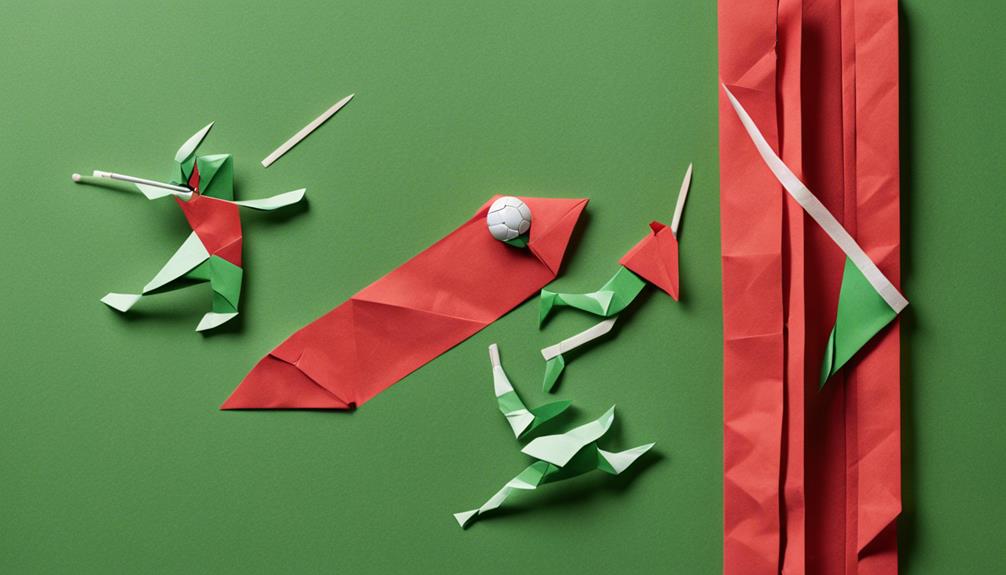
The ball is out of play when it crosses the backline or sideline, or when the umpire blows the whistle to stop play. As a player, you must understand when the ball is in or out of play to avoid confusion and disputes on the field.
When the ball's trajectory takes it beyond the play boundaries, it's considered out of play.
- If the ball crosses the backline or sideline, it's out of play, and the opposing team is awarded a free hit, penalty corner, or penalty stroke depending on which team last touched the ball.
- If the umpire blows the whistle, play is stopped, and the ball is out of play.
- The ball can also be out of play if it lodges in a player's clothing or equipment, or if it's stuck in the goal net.
As a player, you need to understand when the ball is in or out of play to avoid confusion and disputes on the field.
Fouls and Misconduct Penalties
Committing fouls or misconduct can cost your team dearly, so it's essential you understand what constitutes a foul and the resulting penalties. A foul occurs when you break the rules, intentionally or unintentionally, and disrupt the game's flow. Intentional fouls, such as tripping or pushing an opponent, are considered more severe and can result in penalty cards.
The referee has discretion to issue a green, yellow, or red card, depending on the severity of the foul. A green card is a warning, while a yellow card means you're temporarily suspended from the game. A red card, the most severe penalty, means you're ejected from the game.
Aggressive behavior, including verbal abuse or physical altercations, can also result in penalty cards or even ejection from the game. Remember, the referee's decisions are final, and arguing with them can lead to further penalties. It's vital to maintain sportsmanship and respect for the game, opponents, and officials to avoid unnecessary penalties and facilitate a smooth, enjoyable game.
Free Hits and Penalty Corners
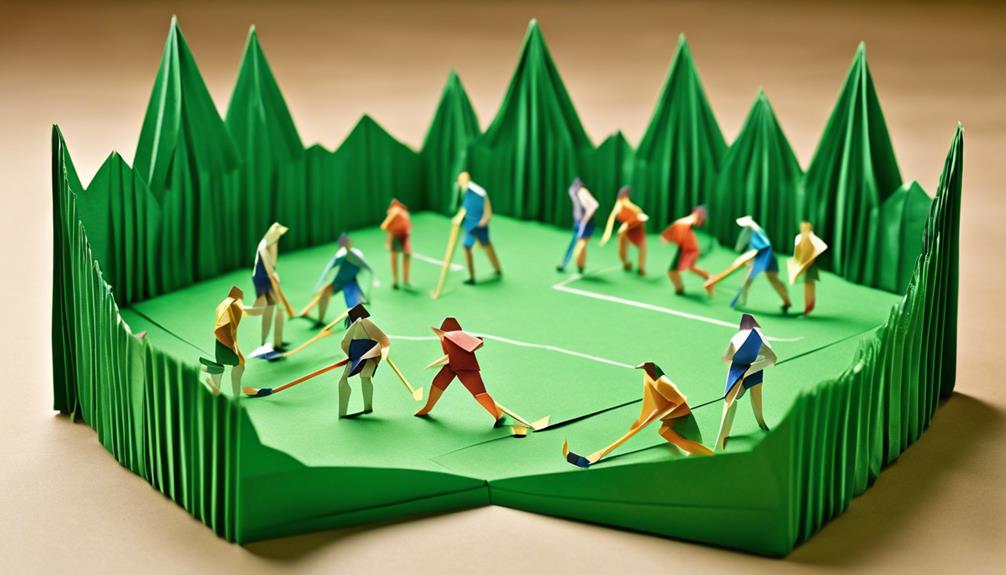
When a foul occurs outside the shooting circle, you're awarded a free hit, which allows your team to restart play quickly and catch the opposing team off guard. This is an excellent opportunity to launch a counter-attack and create scoring opportunities.
To maximize the effectiveness of your free hit, consider the following strategies:
- Quick execution: Take the free hit as quickly as possible to catch the opposing team off balance.
- Deception: Use fake movements or misdirection to confuse the opponents and create space for your teammates.
- Wide options: Use the width of the field to your advantage by playing the ball to a teammate on the sideline, allowing them to attack the circle from a different angle.
Penalty Strokes and Shootouts
In a penalty stroke, you'll have a one-on-one showdown with the goalkeeper, where you'll need to outmaneuver them to score from the backline. This high-pressure situation demands a solid penalty strategy to outsmart the goalkeeper. Your approach should be tailored to the goalkeeper's strengths and weaknesses. Observe their stance, movement, and reaction time to exploit their vulnerabilities. A well-executed penalty stroke can be a game-changer.
In a shootout, the stakes are even higher. You'll face off against the goalkeeper in a series of one-on-one battles, with each shot carrying immense significance. Shootout tactics involve a combination of speed, agility, and deception. You must adapt quickly to the goalkeeper's moves and adjust your approach accordingly. Keep them guessing by varying your speed, angle, and direction. A clever shootout strategy can make all the difference between victory and defeat. By mastering penalty strokes and shootouts, you'll gain a vital edge over your opponents and take your game to the next level.
Game Restart and Resumption
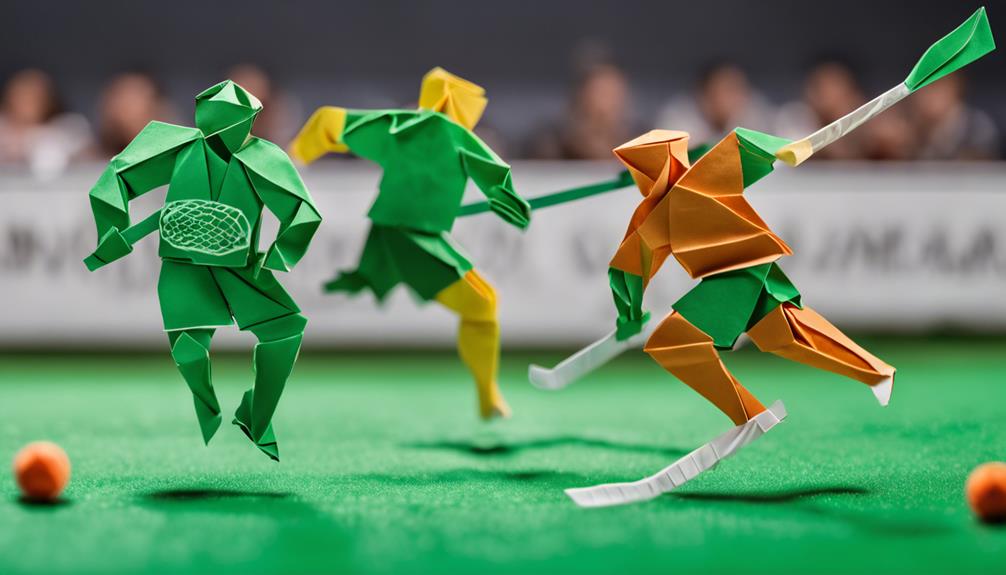
After mastering penalty strokes and shootouts, you'll need to be prepared to restart the game quickly and effectively, as a swift resumption can catch your opponents off guard. Game interruptions can occur at any time, and it's essential to have a solid restart strategy in place. This will not only get the game back underway quickly but also give you an edge over your opponents.
Some key considerations for restarting the game are:
- Quickly regroup and reposition: After a game interruption, quickly regroup and reposition your players to gain an advantage.
- Take advantage of set pieces: Use set pieces like free hits and penalty corners to your advantage, as they can provide scoring opportunities.
- Maintain possession: Focus on maintaining possession of the ball to prevent your opponents from gaining momentum.
Umpire Decisions and Appeals
As you navigate the intricacies of field hockey, understanding the role of umpire decisions and appeals is vital. You should know that the umpire's decision is final, and their calls can greatly impact the game's outcome. However, in certain situations, you can challenge an umpire's call, and knowing when and how to do so effectively is key.
Umpire's Final Decision
Once you've appealed an umpire's decision, you'll typically get only one chance to challenge it, and their final verdict is usually binding. This means that, as a player, you need to respect the umpire's authority and trust their judgment. Blind trust in the umpire's decision-making is vital, as it facilitates the smooth flow of the game.
Respect Authority: The umpire's decision is final, and arguing with them can lead to penalties or even ejection from the game.
No Room for Debate: The umpire's verdict is not open to discussion, and you should focus on getting back to the game rather than disputing their call.
Move Forward: Accept the umpire's decision and focus on the next play, rather than dwelling on a disputed call.
Challenging Umpire Calls
You're allowed to dispute an umpire's call, but you'll need to follow the correct protocol for challenging their decision, which can be a game-changer in field hockey. To initiate a challenge, you'll need to alert the umpire immediately, stating your reason for the dispute. This must be done in a respectful manner, avoiding emotional reactions that can lead to further conflict. Remember, the goal is to clarify the situation, not to intimidate or harass the umpire.
Once you've initiated the challenge, the umpire will review the play, consulting with other officials if necessary. They may choose to uphold or overturn their original decision. If the challenge is successful, the umpire will adjust their call accordingly. Keep in mind that challenging an umpire's call is not a guarantee of a favorable outcome, and you should be prepared to accept the umpire's final decision. By following the correct protocol and maintaining a respectful tone, you can effectively challenge an umpire's call and promote a fair game for all players.
Frequently Asked Questions
Can Players Wear Jewelry During a Game?
"As you step onto the field, remember that expressing personal style through jewelry isn't worth compromising safety; you can't wear jewelry during a game, as it poses a significant risk of injury to yourself or others."
Can a Team Have More Than 11 Players on the Field?
You'll need to rethink your team strategy, as having more than 11 players on the field is not an option; ideal player dynamics rely on a precise, 11-member squad working in harmony to achieve victory.
Do Players Have to Wear Mouthguards?
You're required to wear a mouthguard during field hockey, as it's a vital safety measure. Look for mouthguards made from shock-absorbing materials, like rubber or silicone, which meet strict safety regulations, ensuring your protection and liberation to play confidently.
Can a Game Be Played With a Flat or Damaged Ball?
"Imagine playing a game of skill with a ball that's as flat as your chances of winning – not happening! You can't play with a damaged ball, as ball integrity is key; Referee discretion prevails, and they'll reject any ball not meeting standards."
Can a Player Intentionally Kick the Ball?
"You're wondering if you can intentionally kick the ball? Technically, no, as it's not a soccer game; instead, focus on mastering ball control and precise footwork techniques to outmaneuver opponents and dominate the game."


